Singapore badges of honour
Here's a look at some of the first state awards for outstanding individuals
Sign up now: Get ST's newsletters delivered to your inbox
Alphonsus Chern Photojournalist
Follow topic:
Gilt and silver; silk and enamel. Finely crafted and lovingly hand-finished, these colourful and varied treasures are the state's tribute to pioneers who built Singapore in the early days.
These ranged from the composer who wrote the National Anthem and the sportsman who put Singapore on the world map, to the visionaries who helmed the transport, finance and infrastructure sectors. Then there were the philanthropists, community leaders, artists, engineers, educators and soldiers; not to mention the technicians, clerks, secretaries, and many more representing every facet of life.
Each medal reflects his or her contributions to society - for work well done or a life well-lived.
In 1960, the Minister for Culture, the late S. Rajaratnam, designed the first six state awards with the help of a Royal Air Force officer, Wing Commander Eamonn O'Toole.
Between the Order of Temasek, to highlight exceptionally outstanding individuals of the day, and the Long Service Award, for long and loyal service to the public, were awards for service to the state, gallantry, distinguished conduct, and conspicuous merit. These were personally bestowed on recipients by then Yang di-Pertuan Negara Yusof Ishak at the first state honours investiture at the Istana in 1963.
On this 50th year of Singapore's independence, The Straits Times reopens the leatherette cases of these original awards and decorations, some of which have not seen daylight for many years. Many are now obsolete, existing only until Aug 2, 1996, when their designs were changed to reflect a new era.
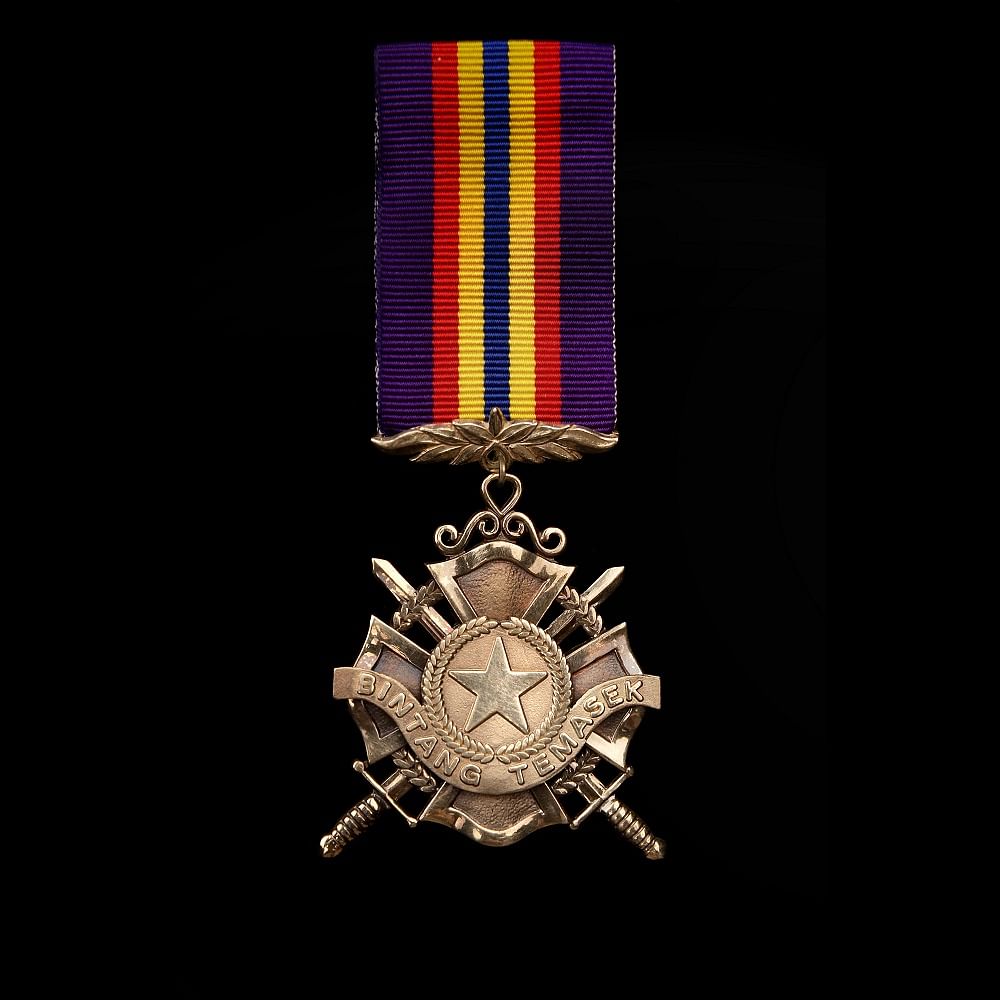
THE STAR OF TEMASEK
Introduced in 1970, the Bintang Temasek, or Star of Temasek, is Singapore's highest decoration reserved for members of the Armed Forces or Police who displayed "acts of exceptional courage and skill", or to those who "exhibited conspicuous devotion to duty in circumstances of extreme danger". The silver medal, which can be given posthumously, has never been awarded.

THE CERTIFICATE OF HONOUR
This medal, the Sijil Kemuliaan, bears the inscription "Kerana Jasa Untok Negara", which means "For Services to the State". In 1962, it was bestowed on
Mr Zubir Said, composer of the National Anthem; Wong Peng Soon, world badminton champion; and Mr Lim Hak Tai, founding principal of the Nanyang Academy of Fine Arts. There are no living recipients of this award today.
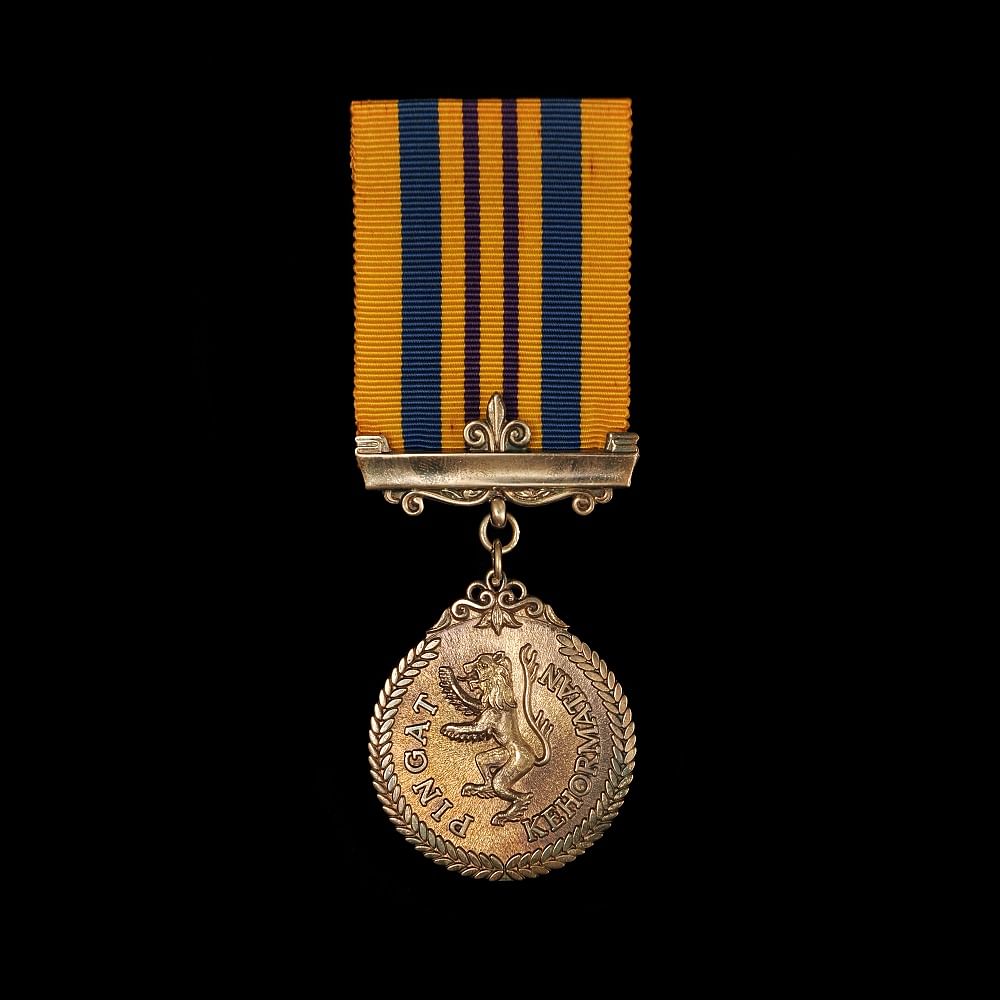
THE MEDAL OF HONOUR
The Pingat Kehormatan, or Medal of Honour, was instituted in 1970 along with the Star of Temasek and the Defence Medal, to reward members of the Armed Forces or Police who performed acts of distinguished conduct while in active field service. This medal has never been awarded.
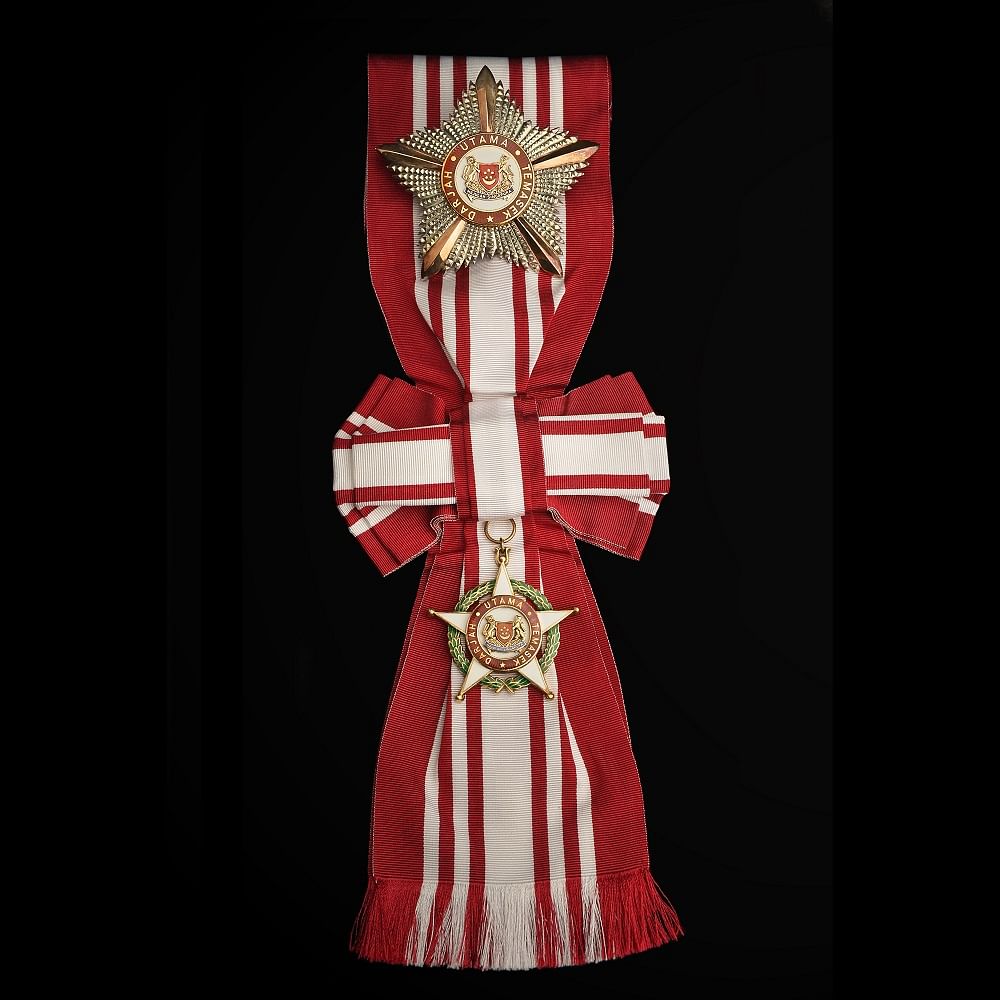
THE ORDER OF TEMASEK
The Darjah Utama Temasek was the highest of six state decorations created in 1962. Members of the Order were ranked just after Cabinet ministers. The first recipient of this award was the late Mr Lim Kim San, then chairman of the Housing and Development Board. Others admitted to this Order, which has three classes, include Queen Elizabeth II (First Class, 1972), the late Dr Goh Keng Swee (First Class, 1985), and the late Mr S. Rajaratnam (First Class, 1990). Not more than 12 persons can be admitted to the First Class of this Order at any time.
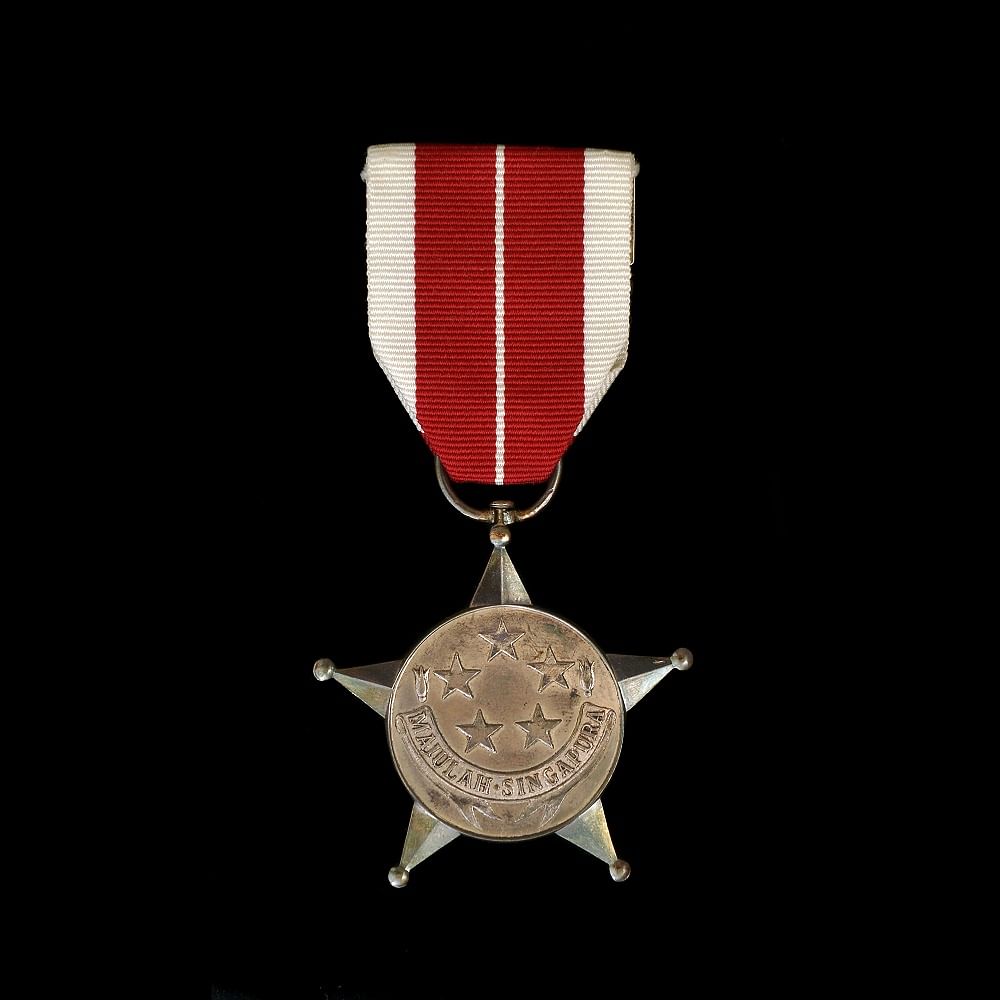
THE PUBLIC SERVICE STAR
The Bintang Bakti Masyarakat was awarded to 88 recipients during its first appearance in 1963. Among them were community leaders, artists, social workers and trade union leaders, including the future Presidents Devan Nair, then general secretary of the NTUC, and Wee Kim Wee, then deputy editor of The Straits Times.

THE PUBLIC ADMINISTRATION MEDAL
The Pingat Pentadbiran Awam was first introduced in 1963 to reward public servants who had "discharged their duties and responsibilities with more efficiency and conscientiousness than was normally expected of them". It came in three grades - gold, silver and bronze - awarded according to the seniority of the recipient's appointment.
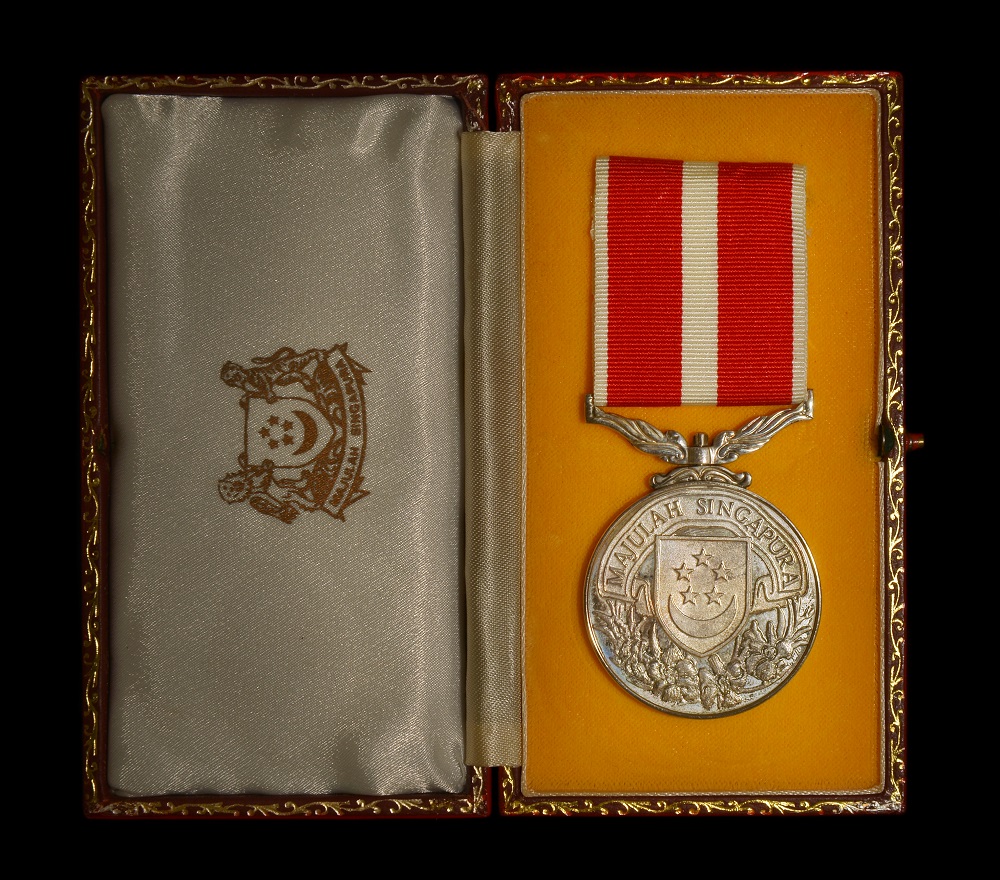
THE MEDAL OF VALOUR
The Pingat Keberanian was created in 1987 to reward any person who has "performed an act of courage or gallantry in circumstances of personal danger". This medal was awarded to the Singapore Armed Forces Commandos unit for its role in the rescue operation during the hijacking of Singapore Airlines Flight SQ117 in 1991.
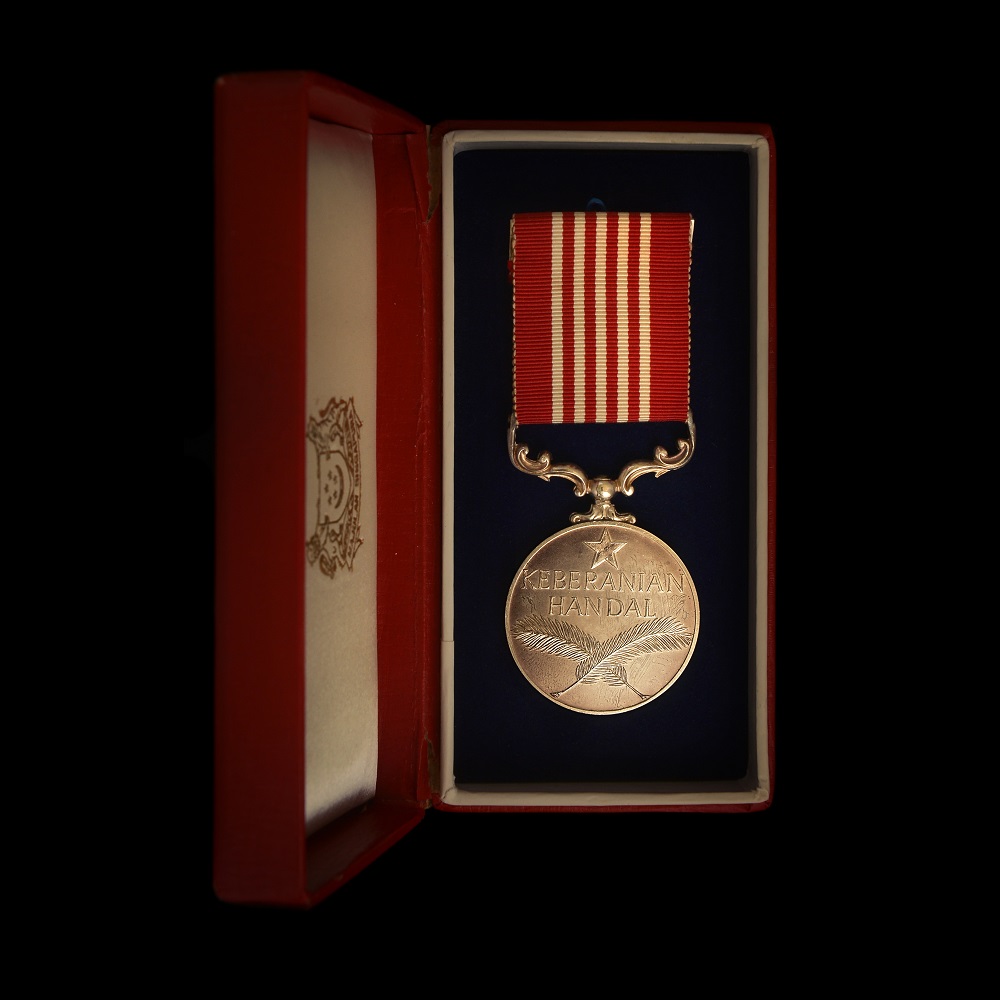
THE CONSPICUOUS GALLANTRY MEDAL
The Pingat Gagah Perkasa was one of the first six state awards given out by Mr Yusof Ishak at the inaugural 1962 Singapore National Day Honours for acts of courage in circumstances of extreme personal danger. The first recipients were deputy superintendents of police Ong Kian Tiong and V. N. Ratna Singam for their role in the capture of kidnapper Oh Kim Kee in 1960.
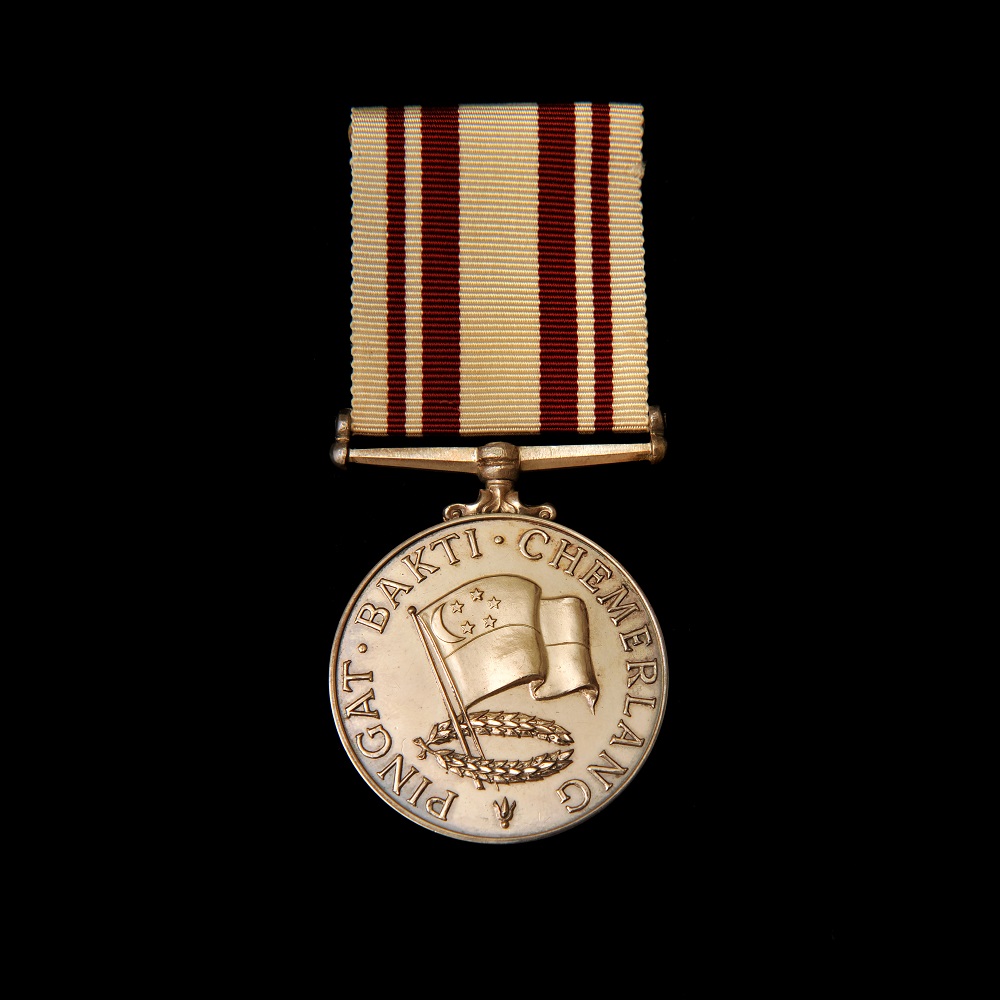
THE DISTINGUISHED SERVICE MEDAL
The fourth of six original 1962 medals, the Pingat Bakti Chemerlang was awarded to Toh Puan Noor Aishah, widow of former president Yusof Ishak, in 1964 for her work in social welfare; and the late Mr Hon Sui Sen (1967), then chairman of the Economic Development Board. This medal was replaced by the Distinguished Service Order in 1968.

THE MERITORIOUS SERVICE MEDAL
The Pingat Jasa Gemilang was the fifth of the six 1962 awards for "long service marked by exceptional ability, merit and exemplary conduct". Recipients include Tan Howe Liang, Olympic silver medallist in weightlifting; Reverend Brother Albert, then director of Boys' Town, Singapore; and Mr S. R. Nathan, then director of security and intelligence, Ministry of Defence.
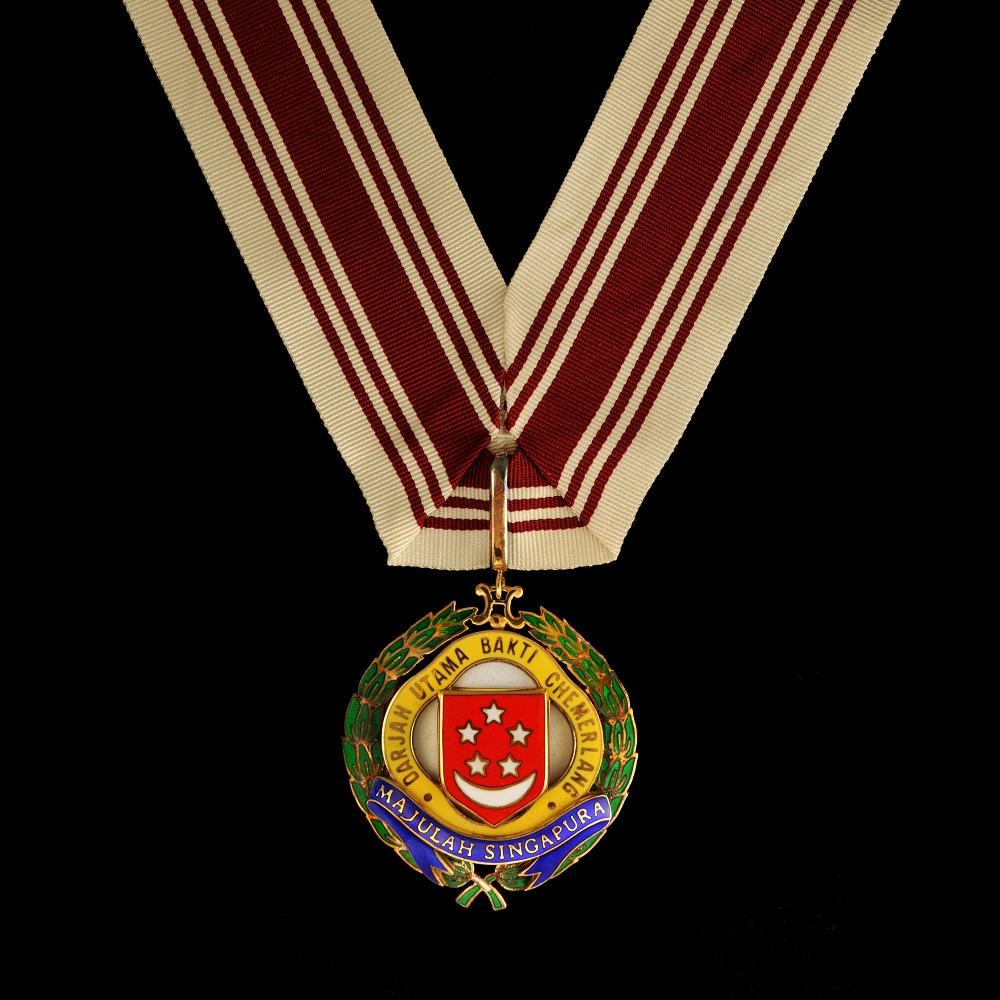
THE DISTINGUISHED SERVICE ORDER
The Darjah Utama Bakti Chemerlang was awarded to "anyone who has performed an act or series of acts constituting distinguished conduct". This was created in 1968 to replace the Distinguished Service Medal, and was first awarded to the late Mr Howe Yoon Chong, then chairman of the Housing and Development Board, who was later Member of Parliament for Potong Pasir. Other recipients include the late philanthropist, Dr Ee Peng Liang (1985), former diplomat Lee Khoon Choy (1990), and Singapore's first Chief Justice, the late Wee Chong Jin (1991).
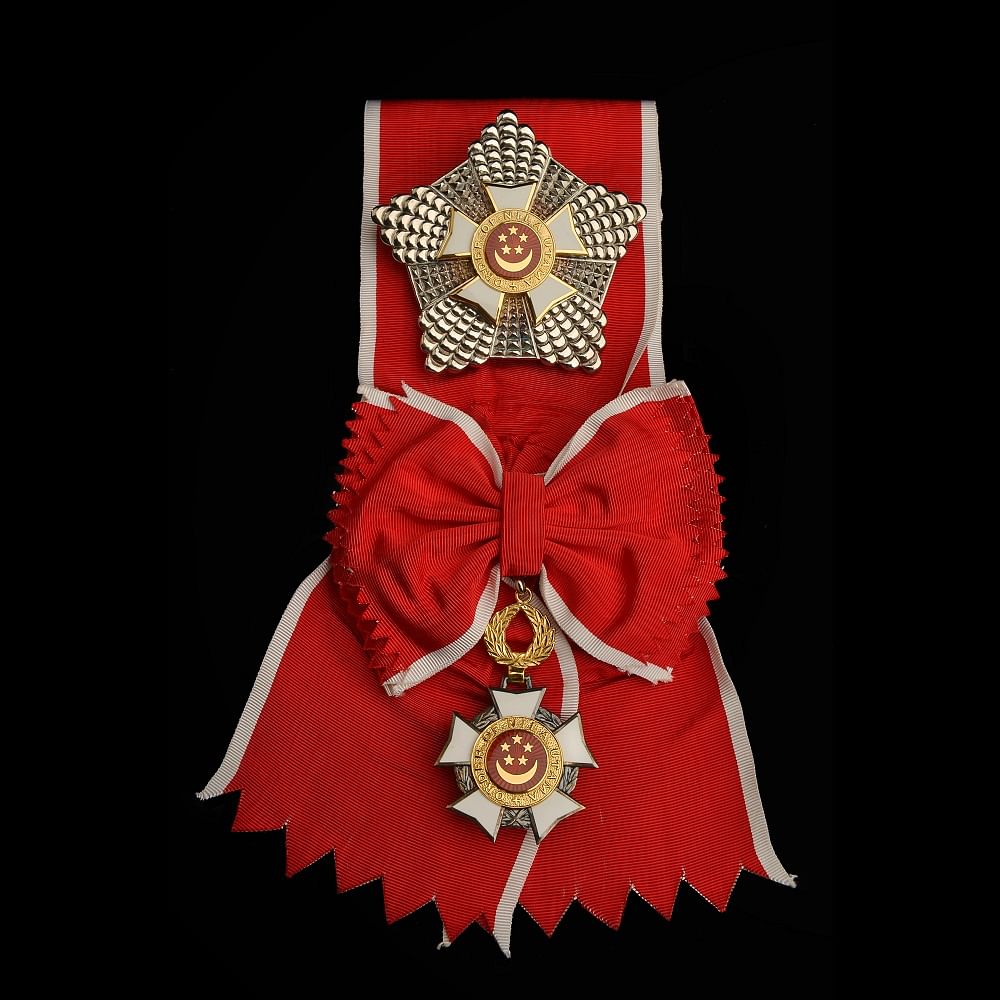
THE ORDER OF NILA UTAMA
The Darjah Utama Nila Utama was in 1975 billed as the "highest award that could be conferred on a foreign dignitary". Instead, it has been awarded mostly to citizens, including the late politician, Dr Toh Chin Chye (First Class, 1990); the late Mr Michael Fam (First Class, 1990), who chaired the Mass Rapid Transit Corporation in the 1980s; and former politician Othman Wok (Second Class, 1990), for their contributions to society.
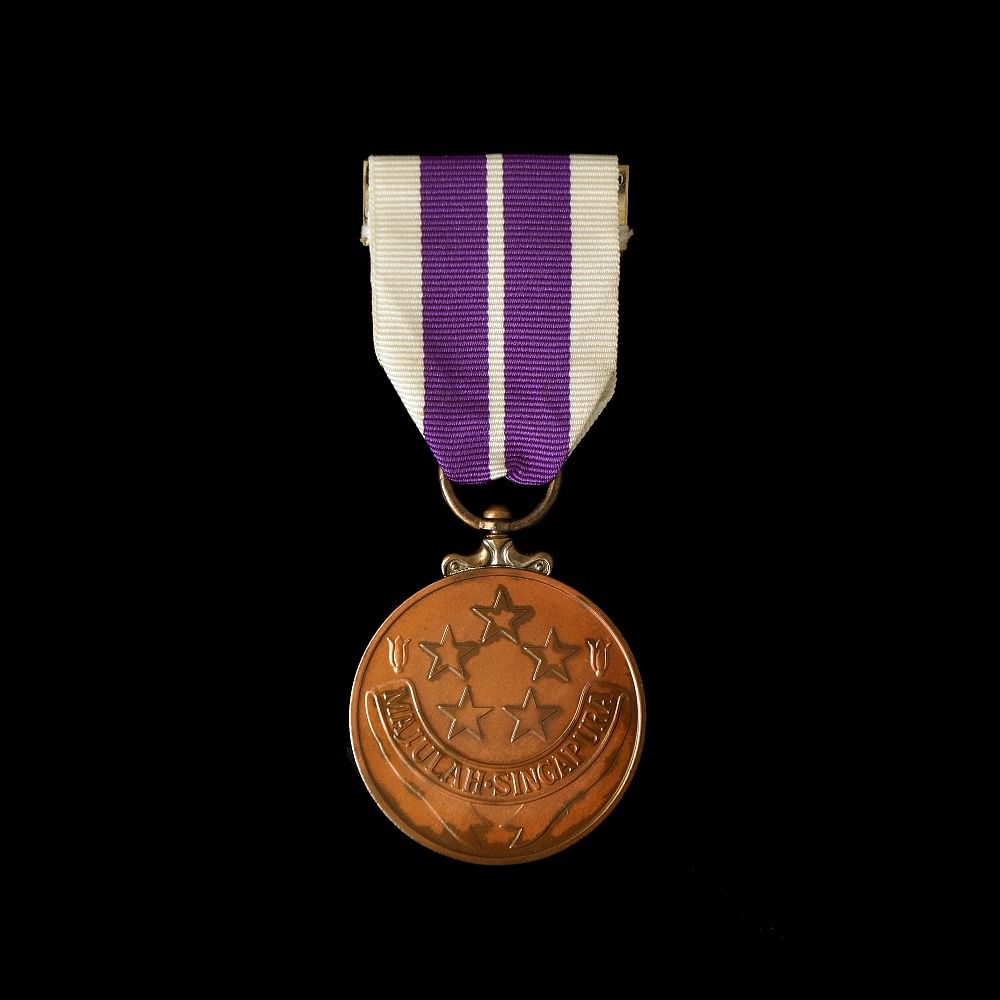
THE PUBLIC SERVICE MEDAL
The Pingat Bakti Masyarakat was instituted in 1973 to reward "commendable public service in Singapore", or for "achievement in arts and letters, sports, the sciences, business, the professions and the labour movement". Recipients of this award may sometimes choose to add the letters PBM after their names.
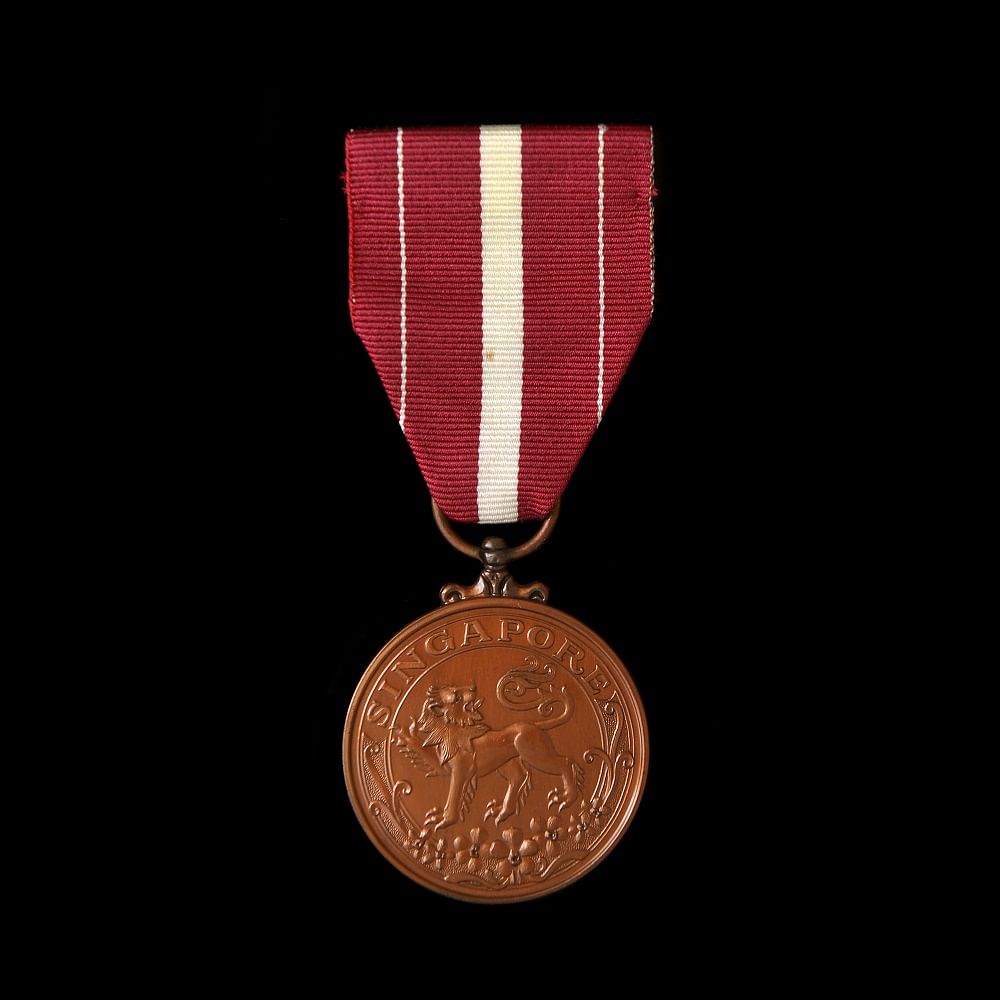
THE EFFICIENCY MEDAL
The Pingat Berkebolehan was instituted in 1969, and was awarded to public servants and those connected with work in the public sphere for "exceptional efficiency or exceptional devotion to duty, or for work of special significance".
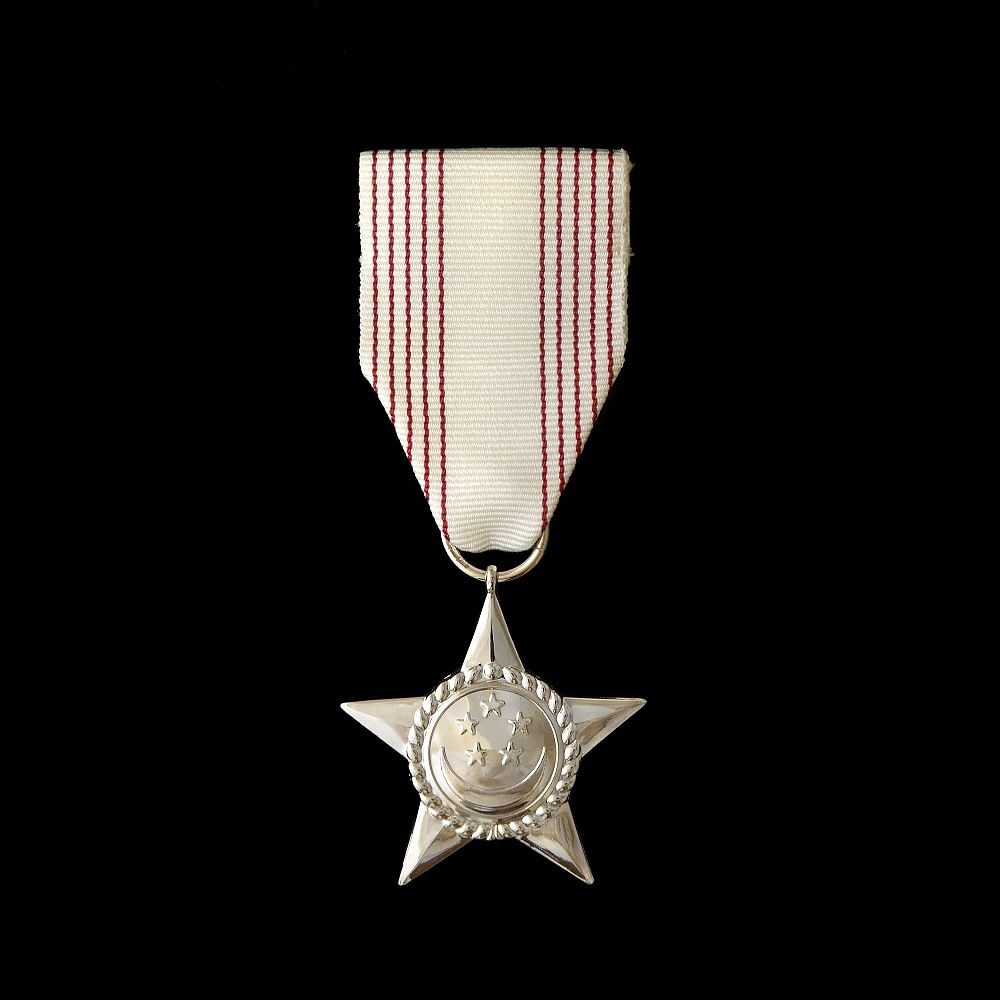
THE LONG SERVICE AWARD
The last of the original six awards created in 1962, the Pingat Bakti Setia rewarded public servants who had served 25 years continuously in the Government, statutory boards, fields of education or in government-owned companies, and who were of "irreproachable character". By the time the design of this medal was changed on Aug 2, 1996, thousands had been awarded.

